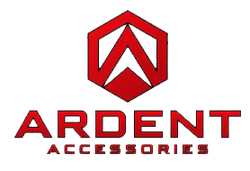Wheel spacers are round metallic materials made of steel or aluminum that mechanics fix between the wheel and its hub.
Its purpose is to push the wheel outside of the car body, which enhances the wheel alignment and spacing, which saves the tires from rubbing with each other.
Moreover, not only does this improve the handling of the vehicles. When you purchase a car, it typically doesn't come with pre-installed wheel spacers.
Hence, it's an aftermarket thing that you have to purchase based on your interests and preferences.
This blog by Ardent Accessories provides a complete guide on how to properly install wheel spacers to ensure correct handling and balance.
Tools and materials required:
1.Floor jack and jack stands
The first step to DIY wheel spacers is to get the floor jack to lift the vehicle to remove the wheel. Followed by placing jack stands to keep it securely elevated. These act as hydraulic tools.
2.Lug wrench or impact wrench
A lug wrench is a manual tool used to loosen and tighten nuts. Meanwhile, an impact wrench uses air or electricity. So they help to remove the tyre impact wrench is also used to loosen lug nuts.
3.Torque wrench
When you want to fix or loosen the nut at a specific angle, you would need a torque wrench.
4. Anti-Seize Compound
A silver glossy blend is applied to the threads and bearing surfaces to prevent rusting. It not only prevents rusting but also simplifies detachments.
5.Wire Brush(Optional)
As the name itself explains that the brush is being used to clean the rust debris, dirt, if any, in the wheel hub before the installation. It's optional, but using it gives you a smooth flow.
6. Thread Locker
This is needed because it serves as the lock when we have placed the wheel space between the wheel hub and the wheel itself. It serves as the adhesive to fix the bolts to prevent them from loosening due to vibrations
7.Wheel Spacer(Hub Centric Recommended)
So it is the main thing as we have to place it between the wheels, in this case hub hub-centric is more preferable as it fixes in the hub of the vehicle perfectly.
As we have gathered all the tools required, now let's move forward towards the next step.
Safety First:
Before you head towards the installation of the wheel spacer, you must make sure about your safety and the stability of the vehicle.
-
Park on a level surface:
You must check that where the car is parked is a levelled surface, to prevent it from rolling off or shifting from the surface.
-
Engage the parking brake:
To avoid the risk of the movement from the rear wheels of the car, make sure to hold the handbrake firmly.
-
Use Wheel Chocks:
Placing chocks behind the car tyres is not a bad idea, as it ensures the stability of the car even more and reduces the chances of rolling.
-
Never Rely on Just a Jack – Use Jack Stands:
As we have already discussed above that the jack is used to lift the car, so not adding jack stands could bring a lot of issues, so you must not trust only the jack lying on the floor; make sure to use the jack stand.
Hopefully, you are considering these safety precautions, as awareness is very important for such activities.
Common Mistakes to Avoid while installing and buying:
You must also know about the mistakes that are commonly committed by installers so you can avoid them. You can also go and purchase from Ardent Accessories from the expert and trusted Sellers to avoid the mistakes while buying:
-
Not tightening lug nut properly
-
Using an incorrect spacer size
-
Ignoring retorque after 50 -100 km.
-
Not having proper knowledge of hub-centric and lug-centric
-
Forgetting to check the stud length
Frequently Asked Questions (FAQs)
1. What are wheel spacers, and what is their purpose?
Wheel spacers are round metal components, usually manufactured from steel or aluminium, installed between the wheel and the hub. Their purpose is to push the wheel outward, upgrading alignment, increasing clearance, and preventing tyres from rubbing against suspension parts or the wheel well.
2. Are wheel spacers pre-installed in new cars?
No, wheel spacers typically do not come pre-installed in new vehicles. They are considered aftermarket attachments that you can buy based on your vehicle’s needs and your personal choices.
3. Do wheel spacers affect vehicle control?
Yes, correctly installed wheel spacers can enhance control by widening the vehicle’s bearing, which improves stability, mainly during cornering or off-road driving.
4. How crucial is vehicle safety during installation?
It is so important so make sure always park on a flat surface, apply the parking brake, and use wheel chocks. Never rely only on a jack—use jack stands to keep the vehicle safely elevated.
5. What are hub-centric and lug-centric spacers?
Hub-centric spacers match the vehicle's hub flawlessly and offer better stability.
Lug-centric spacers rely only on the lug bolts for centering, which may cause vibrations if not installed gingerly.
6. Do I need to re-torque my wheels after installing spacers?
Yes, it’s recommended to re-torque your lug nuts after driving about 50–100 kilometers. This ensures everything stays tight and secure after the starting settling.
7. Can wheel spacers damage my vehicle?
Not if they're installed correctly and chosen carefully. Using poor-quality spacers or installing them improperly can lead to uneven wear, vibrations, or even wheel separation, so it's crucial to follow all instructions carefully.
8. Where should I purchase wheel spacers?
You can purchase them from automotive stores or online vendors, but always ensure the spacers match your car’s make, model, and specifications.
Conclusion:
Installing wheel spacers yourself can be risky, but it can also be a rewarding experience. If you choose to do it, carefully follow the steps mentioned above to avoid any danger or damage. Hope this guiding article by Ardent Accessories increased your knowledge on the Wheel Spacers.


Leave a comment